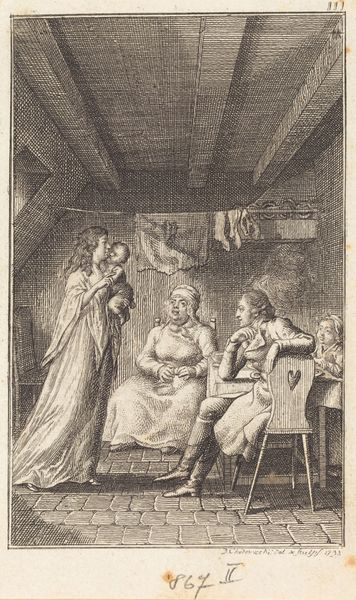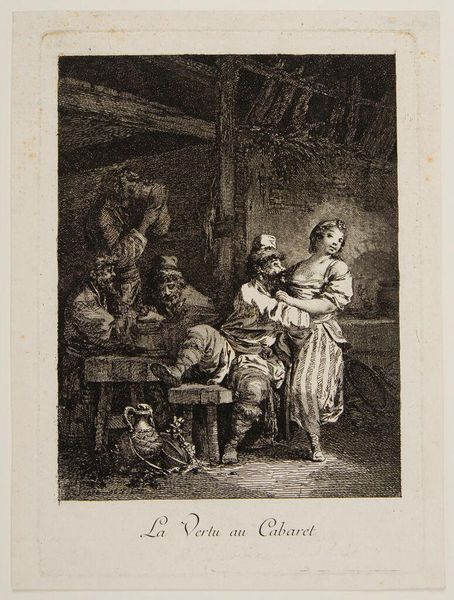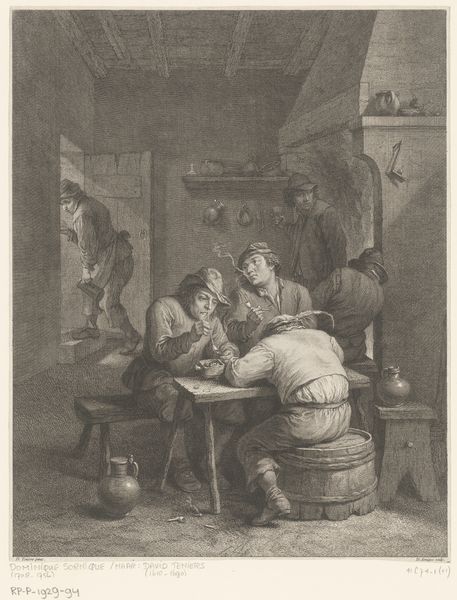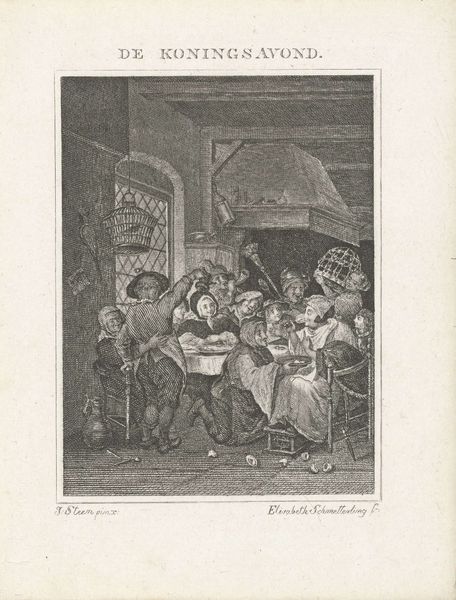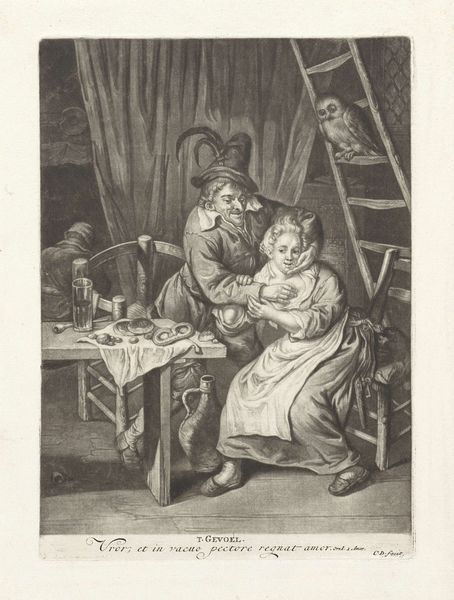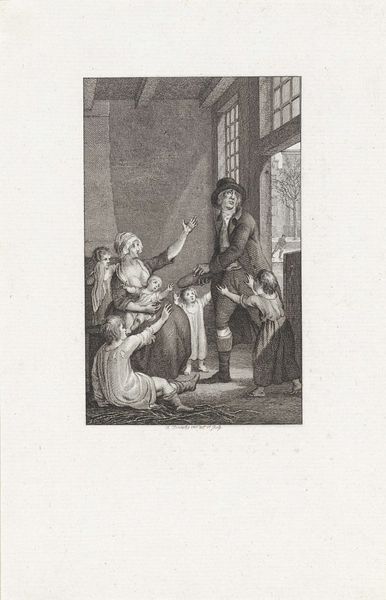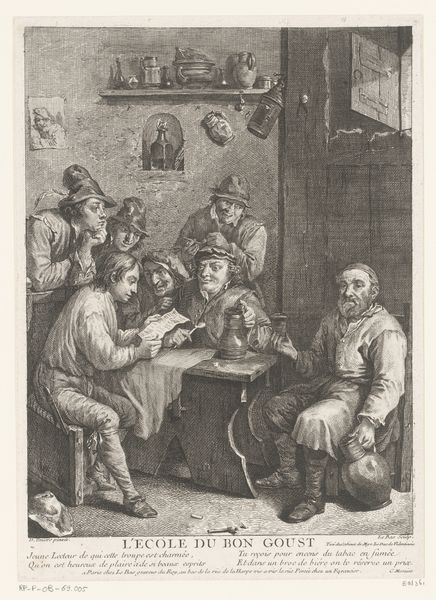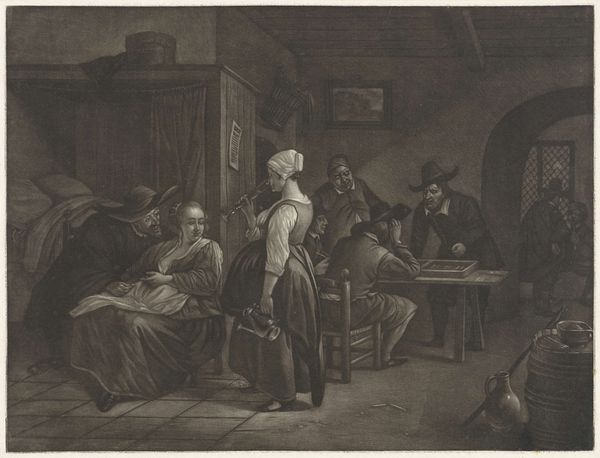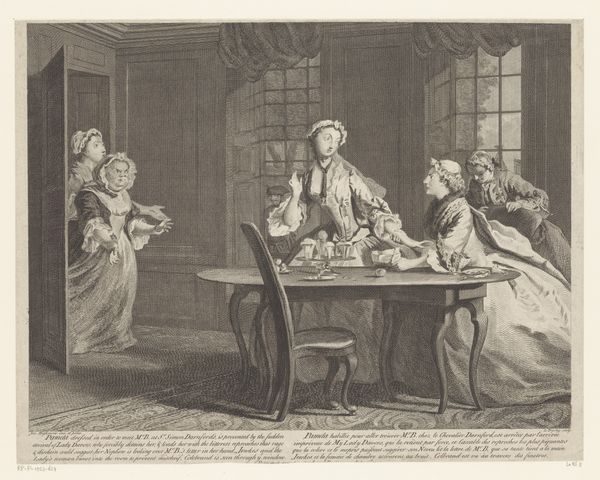
print, engraving
#
portrait
#
narrative-art
# print
#
old engraving style
#
romanticism
#
genre-painting
#
history-painting
#
engraving
Dimensions: height 89 mm, width 65 mm
Copyright: Rijks Museum: Open Domain
Editor: So, here we have Carl Cristiaan Fuchs's "Kaartspelende familie," or "Card-Playing Family," an engraving from 1822. It depicts an intimate scene, but the way the man is leaning over the woman's shoulder makes me feel a bit uneasy; it's like he’s intruding. How would you interpret the social dynamic at play here? Curator: The print gives us a peek into the values of the early 19th century and how those values were portrayed and consumed by the public. Think about it - what kind of story is being told here, and why was that story appealing at that time? Is it about the idyllic domesticity, the subtle power dynamics within families, or perhaps something else entirely? Editor: Well, there's clearly a hierarchy within the family. The older woman seems very focused and the boy quite bored while the man is overtly interfering with the younger woman. Curator: Exactly. And these weren't just random scenes; artists, then and now, participate in creating or reinforcing social narratives, so considering what a genre scene like this was *doing* is vital. Consider also the role of institutions like the Rijksmuseum in preserving and presenting these specific slices of history, further solidifying their perceived value. Are they neutral spaces, or do they actively shape our understanding? Editor: That's interesting. It's not just a window into the past; it's a curated view of the past, too. Curator: Precisely! Every piece selected for display participates in an ongoing dialogue about culture, power, and representation. This unassuming card game suddenly seems loaded with meaning, doesn't it? Editor: It does. I came in seeing a simple genre scene, but I'm leaving thinking about museums as storytellers, too!
Comments
No comments
Be the first to comment and join the conversation on the ultimate creative platform.
